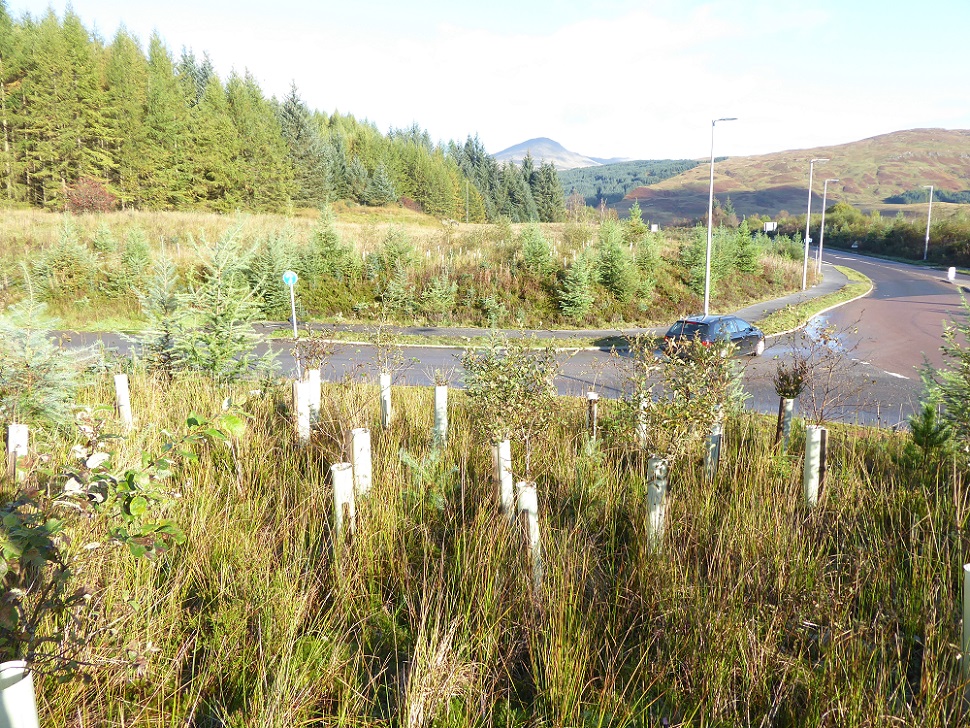
On Friday, while travelling north up the A82, I stopped by the first roundabout at the start of the Crianlarich bypass to take a look at the landscaping. It provides a lesson in ecology and current forestry practices right next to the road.
The A82 Crianlarich by-pass, was completed in December 2014, almost seven years ago – time for trees to get established. It circumvents the village on its western side and through a cutting which has left some areas of bare rock and thin soils.
The Environmental Statement, completed in 2009 (see here), documented the habitat that would be lost (2 hectares) or affected (8 hectares) by the creation of the bypass. To mitigate these impacts, the Environmental Statement recommended some ornanmental landscaping, a hectare of native tree planting to replace the native woodland that be lost, but that most of the surrounding ground (6.3 hectares) should be left to regenerate naturally.
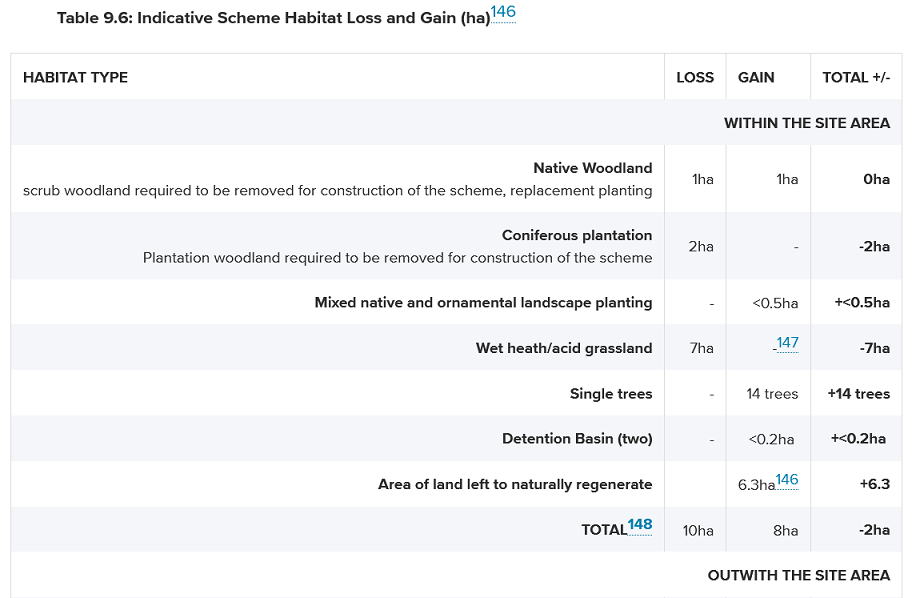
The Environmental Statement further specificied that the planting should be “native trees typical to the local area”:
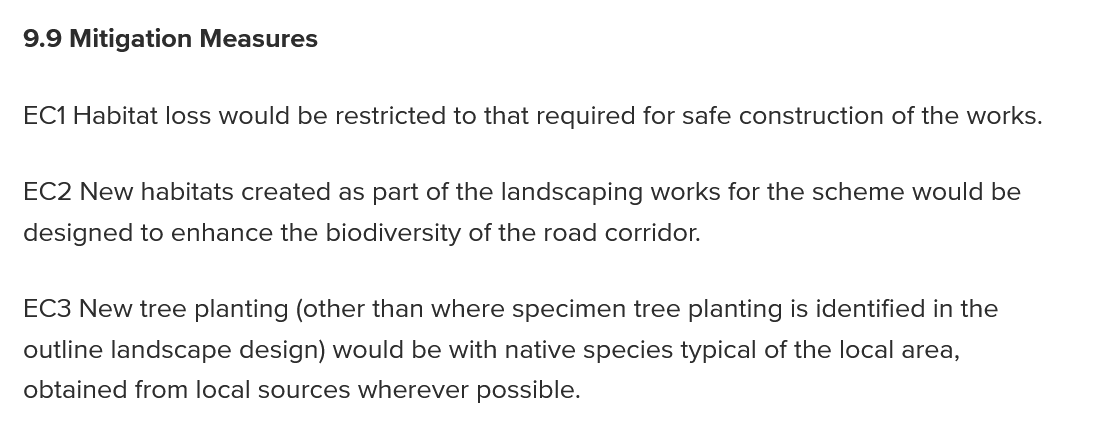
There was no mention in the Environtal Statement of HOW those trees should be planted, including the use of plastic tree tubes, why they might be needed, how they would be managed or their impact on the natural environment. That is a pretty significant omission given what was known even back in 2009 about the damaging impacts of plastic on the natural environment.
What should be clear to anyone who spends five minutes looking at the site now, however, is that the plastic tree tubes weren’t needed AND that unless there are other management interventions they are not going to deliver the promised native trees “typical” of the area. (The range/diversity of such trees has been reduced considerably because of the impacts of overgrazing and plantation forestry in this part of the National Park).
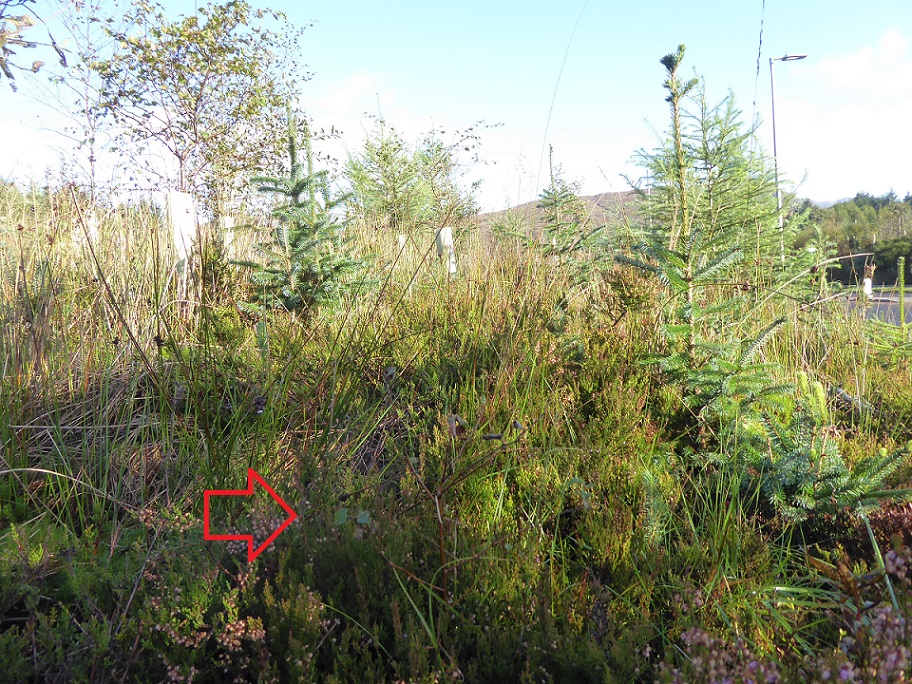
I am no expert but it didn’t take me more than a couple of minutes to spot several self-seeded deciduous trees growing up between the tree shelters, evidence that native trees could have regenerated here without any planting or “protection” from plastics tree tubes. Transport Scotland should have known this because along much of the A82 between Balloch and Bridge of Orchy a belt of native scrub has developed alongside the road without any help from humans other than fencing to keep sheep out. The problem is that landcaping consultants nowadays automatically recommend planting and the use of plastic tree shelters has now become their default position.
Part of the role of the Loch Lomond and Trossachs National Park Authority should be to challenge such thinking. But instead their planners also recommend tree planting as a matter of course, without taking any account of the power of natural regeneration or what will happen to all the plastic. As a result plastic tree tubes are now a common sight in landscaped areas around developments in the the National Park.
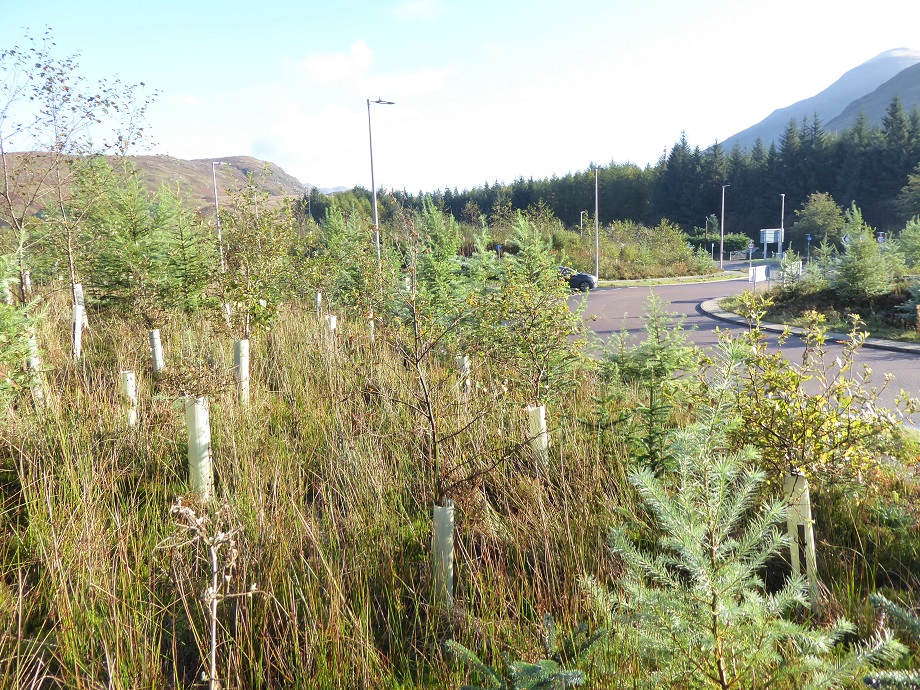
The area around the bypass is fenced and I could see no signs of grazing, whether by sheep or voles, and the luxuriant vegetation tells its own tale. In such situations, plastic tree shelters – which let in light – can help deciduous trees get up above the surrounding plants (as above). But not always:
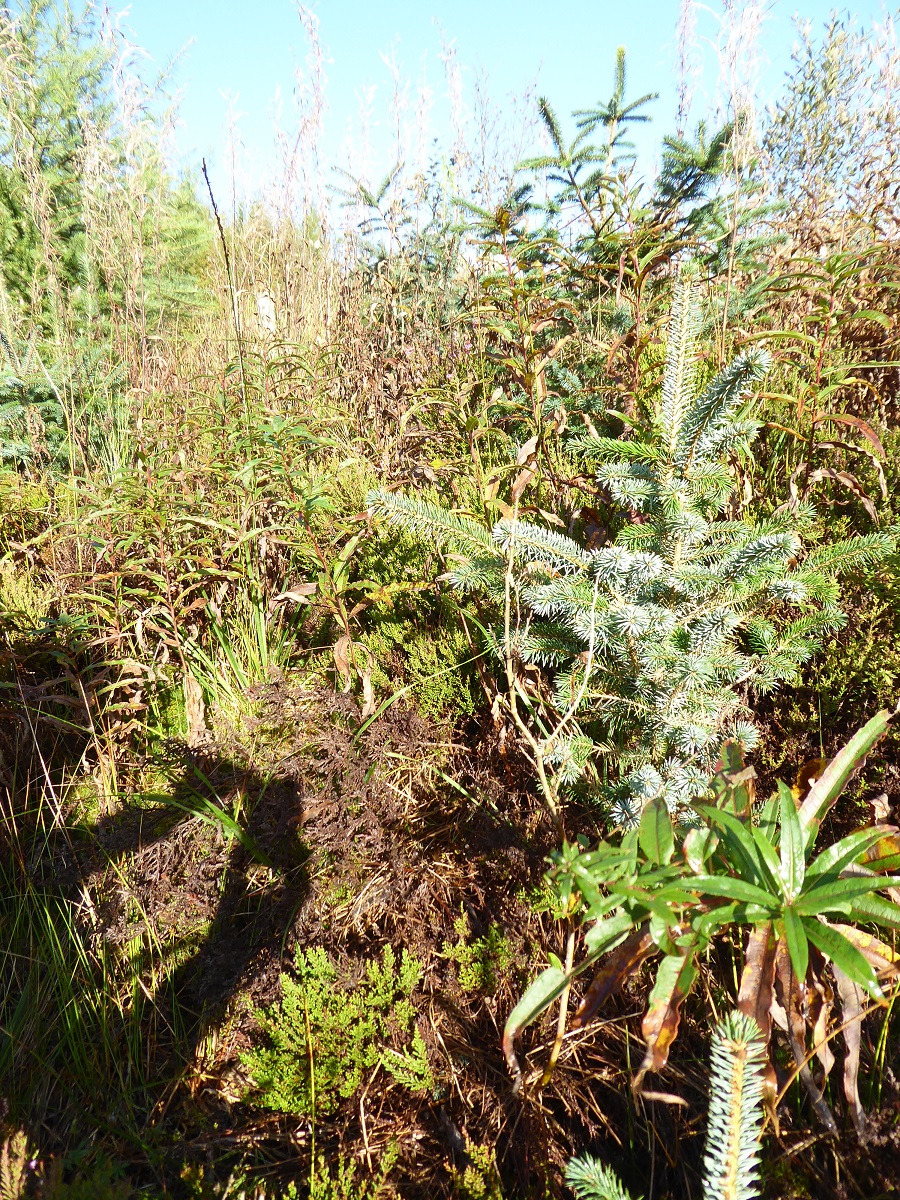
At Crianlarich, many of the tree shelters are being swamped by other regenerating plants. While some deciduous trees, whether protected by tree tubes or not, may eventually outcompete and success the rosebay willowherb, whether they have any chance against the self seeding spruce tree is another matter. Despite the planted trees having a season or two’s head start over the self-seeded conifers, the photos show few now project above them and many are being shaded out. Given the number of the spruce, it is difficult to see many of the native deciduous trees surviving and delivering Transport Scotland’s objective of replacing native trees with native trees.
The tree tube plan was probably never going to work given the proximity of the conifer plantation and its massive seed source so close to the bypass. To achieve its stated objective, rather than spending money on harmful plastic tree shelters, Transport Scotland would have been better employing local people to remove spruce saplings until the native woodland had become established. But that would require a commitment to ongoing woodland management and that is not how forestry or landscape “improvement” currently operates in Scotland. Our modus operandi is on contractors coming in to plant trees and then leaving them. Plastic tree tubes are now integral to that practice and provision is rarely made for removing them.
It’s time that Transport Scotland and both our National Parks adopted a policy presumption against the use of plastic tree shelters and introduced measures to start removing them before it is too late. The long-term consequences of tree tubes for the biology of organisisms – ourselves included – as they break down and particles of plastic enter the food chain is being disregarded to the point of recklessness. What the Crianlarich bypass illustrates is that their alleged benefits are generally exaggerated – woodland has been expanding perfectly naturally for millions of years given the right conditions – and should always be viewed from a wider ecological perspective.
It’s not a big task, nor a skilled task, to remove tree tubes, provided it’s done before the tree grows through the tube. I’ve got my own children to have a go at removing tubes where they are now redundant, and it’s not difficult.
I had a converstion about non-removal with a landscape architect, who said that the problem was that she could (and did) write removal into the contract, but was unable to make a big enough retention of money to make it worth the contractor’s cost in doing the removal. So the contractor just ignores that bit of the contract, and there is no remedy. There are so few contractors that it’s not possible to withhold future contracts.
I hate these things. They are a real eyesore and so ironic that their use probably cancels out the positives of planting a tree in the first place. The new dualled part of the A9 north of Perth is just hideous with all these plastic tubes.
While not wishing to detract from the very valid points you make in this particular blog, could I just point out, and I’m sure others have done so elsewhere the issue of Sitka spruce (and other non-native (invasive)) tree species regeneration onto semi-natural habitats. I believe the Forestry Commission argued strongly to have most tree species listed as exceptions to the law applying to non-native plants in the 2012 legislation (The Wildlife and Countryside Act 1981 (Exceptions to section 14) (Scotland) Order 2012 -Scottish Statutory Instruments 2012 No. 173 – If I’ve cut and pasted correctly). It is clear to me that should we ever manage to get NatureScot to take the burgeoning deer population seriously and get it under control and reduced, there will be a very large upsurge in the naturally regenerated spread of particularly Sitka spruce in the west of Scotland – to the detriment of native species. I’m sure many people have examples of this already; there is a well rooted scrubby Sitka on the Cuillin ridge of all places, and on a recent visit to the Flow Country I noted several tens of hectares of regeneration Sitka across the peatlands between commercial forestry and Loch More to the east of Altnabrec. We’ve allowed forestry to introduce this and other species into the Scottish landscape without any consideration of the longer term consequences.
Controlling deer numbers would have the opposite effect: one of the main reasons Sitka is the tree of choice for commercial foresters is that it is far less palatable to deer than the alternatives; similarly it often dominates natural regeneration because everything else is heavily browsed.
Interesting. Yes I complained to a forester once about lack of imagination in a spruce farm in the Ochils. He listed all the soft palatable species that the hares and rabbits and deer had browsed to nothing (before the arrival of tree shelters).
I hope that you’re right. In the meantime spruce is marching over the hills.
Some valuable learning points in this blog for Transport Scotland, NatureScot and in particular National Park planners. The worry is will they ever learn? I’ve been involved in large landscaping projects which formed part of large suburban developments – not sensitive rural environments. Nevertheless, the planning conditions (all English planning authorities) were very clear that annual maintenance was required (specified in an approved maintenance plan) with annual reports to cover replacement of dead trees, and management of tree tubes and their removal when no longer required………and this was 20 years ago, with enforcement action backed by bonds etc.
Scottish planners, including National Park planners, might just remember to include a landscape management plan, but will almost never enforce these conditions. The problem is that the developers know this. The problem is also likely to be worse when public authorities like Transport Scotland are involved with even more reticence to enforce.
In answer to your first commenter’s example of the landscape architect’s problem of not being able to make the contractor’s retention big enough, a bond or something similar can be required (particularly by planners) to make the contractor (or developer) complete the maintenance work.
Being a Landscape Architect, a typical planting contract has a 12 month defects liability period where dead plants are replaced one year after planting. On conscientious contracts, the contract maintenance period might be 3 – 5 years plus.
Plastic tree guards where specified, should be removed one to three years after planting depending on growth establishment. Thankfully, the world of tree guards is evolving and natural compostable alternatives are already available on the market from companies who have funded their own tried and tested research. A good example is “Earthboard Resolve – sapling protector” from http://www.sirane.com (marketed and sold through Green-Tech in the UK). These natural products should be strongly promoted, specified and widely adopted as the prescribed method of tree protection (where used). Life expectancy is at least three years before safely rotting into the ground. One should take a long-term view on any undertaking and carefully consider treatment methods for woodland establishment alongside a programme to eradicate non-native invasive and unwanted species (Sitka Spruce) and protecting wider areas to naturally re-generate.
About 15 years ago a near neighbour planted a small shelter belt of a dozen or so native broad-leaved trees to the west of his house. Well staked against the prevailing winds, and concealed within plastic tubes the seedlings appeared to thrive for a year or two. Soon the first shoots emerged from the top of the plastic tubes. Neatly presented at an ideal ‘table height ! ‘ the most comfortable height for the marauding deer herds, the shoots were nibbled off….repeatedly. ( Deer – certainly not stupid at all – obviously could spot exactly where the tastiest shoots were to be found.Bright yellow plastic tubes are so hard to ignore? )
There are no trees there now. despite the establishment of an all enclosing deer fence around the croft ten years ago.. this came too late…to keep the persecutors out. The potential glade of trees are but a local memory. Now, had the tubes had been of cardboard and coloured brown or green the food source for deer might not have been so obvious?
It raises the observation that if actually at all necessary..all these tubes could be “quiet” colours, and biodegradable. One reason they are what they are must be because landscape restoration contractors want their work to be seen..and perhaps admired ? !